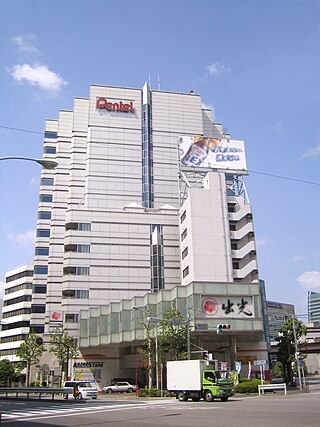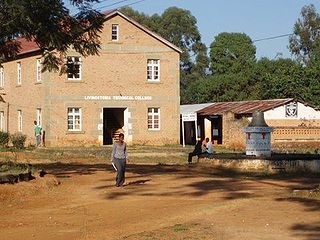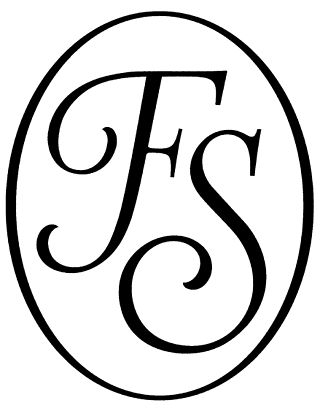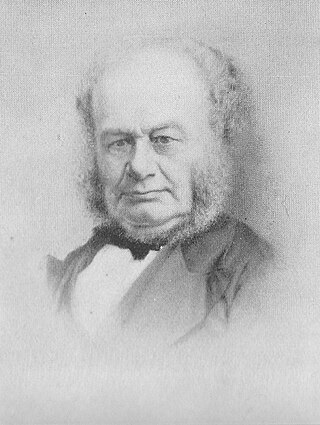
David Livingstone was a Scottish physician, Congregationalist, and pioneer Christian missionary with the London Missionary Society, an explorer in Africa, who wanted to abolish slavery, and one of the most popular British heroes of the late 19th-century Victorian era. David was the husband of Mary Moffat Livingstone, from the prominent 18th-century missionary family, Moffat. Livingstone had a mythic status that operated on a number of interconnected levels: Protestant missionary martyr, working-class "rags-to-riches" inspirational story, scientific investigator and explorer, imperial reformer, anti-slavery crusader, and advocate of British commercial and colonial expansion.

Stationery refers to commercially manufactured writing materials, including cut paper, envelopes, writing implements, continuous form paper, and other office supplies. Stationery includes materials to be written on by hand or by equipment such as computer printers.

The London Gazette is one of the official journals of record or government gazettes of the Government of the United Kingdom, and the most important among such official journals in the United Kingdom, in which certain statutory notices are required to be published. The Gazette is not a conventional newspaper offering general news coverage. It does not have a large circulation. Other official newspapers of the UK government are The Edinburgh Gazette and The Belfast Gazette, which, apart from reproducing certain materials of nationwide interest published in The London Gazette, also contain publications specific to Scotland and Northern Ireland, respectively. In turn, The London Gazette carries not only notices of UK-wide interest, but also those relating specifically to entities or people in England and Wales. However, certain notices that are only of specific interest to Scotland or Northern Ireland are also required to be published in The London Gazette.

A personal organizer, datebook, date log, daybook, day planner, personal analog assistant, book planner, year planner, or agenda, is a small book or binder that is designed to be portable. It usually contains a diary, calendar, address book, blank paper, and other sections. The organizer is a personal tool and may also include pages with useful information, such as maps and telephone codes. It is related to the separate desktop stationery items that have one or more of the same functions, such as appointment calendars, rolodexes, notebooks, and almanacs.
Filofax is a company based in the UK that produces a range of personal organiser wallets. The organisers are traditionally leather bound and have a six-ring loose-leaf binder system. The design originated at Lefax, a United States company from Philadelphia which was exporting products to the UK. The company also markets a range of personal leather goods and luggage under the "Filofax" brand.

Pentel Co., Ltd. is a privately-held Japanese manufacturing company of stationery products. The name comes from one of their first widely known products and is a portmanteau of the English words pen and pastel. Pentel is also the inventor of non-permanent marker technology. Most Pentel products are manufactured in Japan, Taiwan, Korea, Mexico, and France.
Charles Frederick Frazier Mackenzie (1825–62) was a Church of England Bishop of Central Africa. He is commemorated in some Anglican Church Calendars.

The London Missionary Society was an interdenominational evangelical missionary society formed in England in 1795 at the instigation of Welsh Congregationalist minister Edward Williams. It was largely Reformed in outlook, with Congregational missions in Oceania, Africa, and the Americas, although there were also Presbyterians, Methodists, Baptists, and various other Protestants involved. It now forms part of the Council for World Mission.

John Dickinson Stationery Limited was a leading English stationery company founded in southwest Hertfordshire. In the 19th century, the company pioneered a number of innovations in papermaking. It became part of Dickinson Robinson Group in 1966; after changes of ownership, the John Dickinson brand was retired in 2008.

Livingstonia or Kondowe is a town located in the Northern Region district of Rumphi in Malawi. It is 430 kilometres north of the capital, Lilongwe, and connected by road to Chitimba on the shore Lake Malawi.

The Folio Society is a London-based publisher, founded by Charles Ede in 1947 and incorporated in 1971. Formerly privately owned, it operates as an employee ownership trust since 2021.
Events from the year 1840 in the United Kingdom.
Thomas Letts was an English stationer and printer who popularised the diary. He was born at Stockwell, London, the son of John Letts, a bookbinder and printer of the Royal Exchange. In 1816, his father published ‘Letts's diary or bills owed book and almanack’ as the first commercially produced diary, which Thomas developed into of dozens of differently printed and bound, annual publications.

George Philip (1800–1882) was a cartographer, map publisher and founder of the publishing house George Philip & Son Ltd.

In stationery, a diary, datebook, daybook, appointment book, planner or agenda is a small book contained a main diary section with a space for each day of the year with room for notes, a calendar. Usually, various pages at the beginning and end contained various pieces of reference information, which may include maps and telephone codes, and pages for a short address book at the end. Most diaries are pre-printed for a specific year on the cover. With each day's space, they were able to be printed with the day of the week. However, diaries that can be used for any year are also produced. Page-marker ribbons are commonly included. The US Customs official definition of a diary is: "A book prepared for keeping a daily record, or having spaces with printed dates for daily memoranda and jottings; also applied to calendars containing daily memoranda on matters of importance to people generally, or to members of a particular profession, occupation, or pursuit".
William Collins, Sons & Co., often referred to as Collins, was a Scottish printing and publishing company founded by a Presbyterian schoolmaster, William Collins, in Glasgow in 1819, in partnership with Charles Chalmers, the younger brother of Thomas Chalmers, the minister of Tron Church in Glasgow.
Events from the year 1871 in Scotland.
Events from the year 1815 in Scotland.

The Ruthven printing press was invented and manufactured by John Ruthven of Edinburgh, Scotland, from 1819 to 1822. The Ruthven press was an iron bed press which functioned by means of an unconventional platen which rolled over a stationary table which held the type, where the pressure on the type faces was exerted from below, instead of in the conventional method where pressure was applied from above. The platen is supported by two iron springs, under which are four brass bevelled wheels which move along on two tracks made of bevelled steel. After the impression is made the springs give way, and consequently rise up. The press overall incorporated a number of other rather complex mechanical components, the details of which are beyond the scope of this article. The press was smaller in size than most presses of this period, easier to use, and subsequently it quickly established a favorable reputation for itself among English printers.












